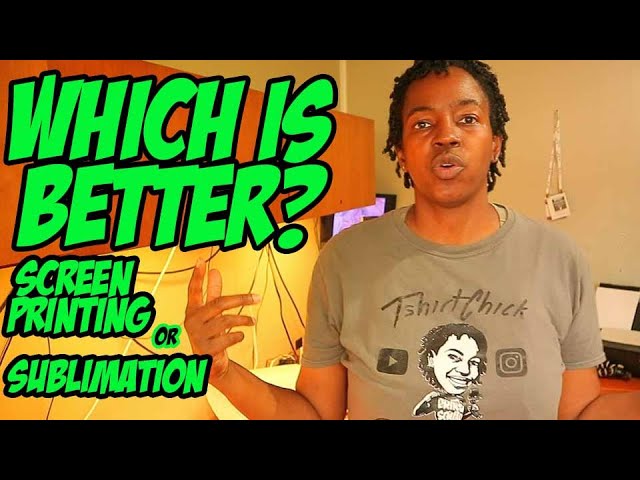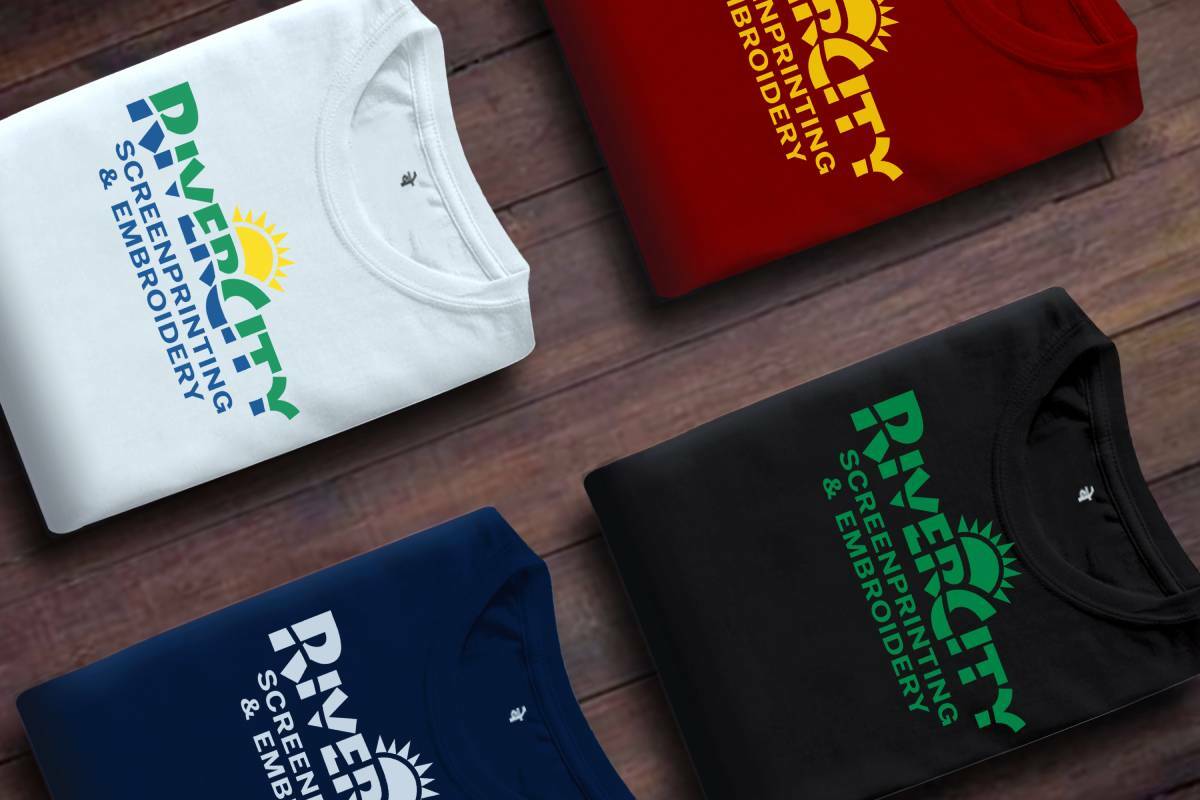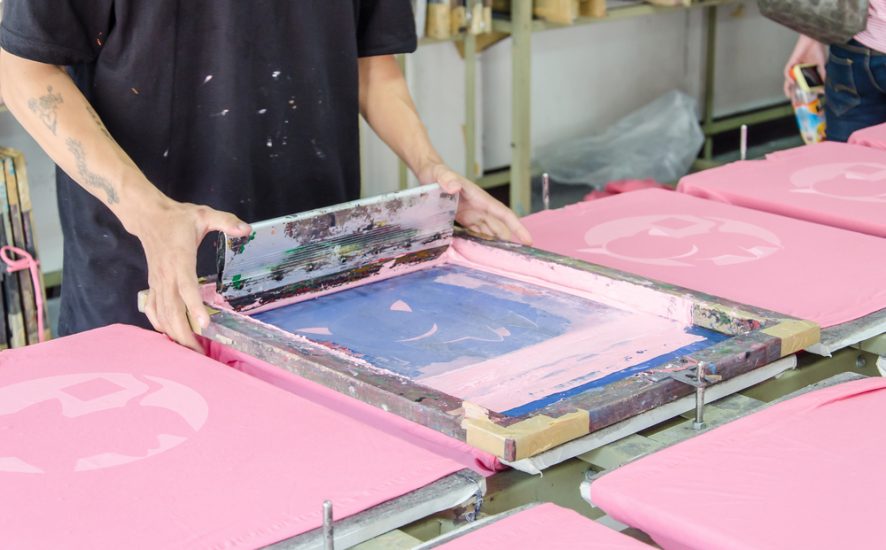10 Easy Facts About Tx Tees Explained
10 Easy Facts About Tx Tees Explained
Blog Article
See This Report about Tx Tees
Table of ContentsFacts About Tx Tees RevealedThings about Tx TeesThe 25-Second Trick For Tx TeesAn Unbiased View of Tx TeesTx Tees Can Be Fun For Everyone8 Simple Techniques For Tx TeesWhat Does Tx Tees Do?
Include up various other expenses, like the number of utilities it takes to run the store and the cost of ink and solution per style. Take the print listed below.The emulsion needs to just be a few cents because you 'd just require to layer one screen for this job. How much should you charge per t-shirt to make a revenue? Usually, printers attempt to make up to 45% profit on a print job. Here's a table to assist you figure out that: complete price per thing percent of wanted earnings as a decimal (example:.25 or.45) profit made per item per job Now let's discuss the productivity of DTF.

With DTF, you can print a handful of t shirts, or just one. Both screen printing and DTF have their particular niches in the world.
The Best Strategy To Use For Tx Tees
The most effective method to recognize? Ask around and see what printing shop like your own are doing. embroidery shop. Attempt both out and see which you like better
When you're choosing what kind of printing technique to utilize for printing your art work designs on your garments, it is essential that you recognize the distinctions in between these 2 strategies so you can take full advantage of outcomes while decreasing prices. Display printing is one of the most generally used technique for printing designs on fabrics.
DTG printing is additionally known as spot or direct to garment printing because it prints just what is required as opposed to making a display as screen printers do. https://www.twitch.tv/txtees02/about. Screen printing works by screen filler squeegee display printing ink screen mesh display, then moving the image to garment utilizing heat and/or pressure
The DTG printer makes use of special dye-sublimation inks that are used into a pre-designed photo by a digital printing system. The inks enter into the material, enabling lively colors and exceptional detail. It's additionally understood as place or direct to garment printing since it publishes only what is needed as opposed to making a screen as screen printers do.
All about Tx Tees
First, it's much quicker - you can publish a fullcolor photo in minutes, instead of hours for display printing. Second, there's no established time or expenses included - you can publish any kind of layout you like, without having to produce a display first. Third, there's no waste - because screen printers screen print one design at a time, they have to screen each color separately.
The paper is very expensive and can only be used once. Once it's printed on, it has to be discarded. - The initial purchase price is lower than the upfront financial investment of DTG printers- You can print multi-color layouts one screen at a time as opposed to needing to publish each color individually like DTG printing.

Fascination About Tx Tees
Rather of utilizing display mesh as display printers do, color sublimation printers use laser modern technology to transfer your pictures onto garments or paper. A heat procedure moves the dye from its solid-state straight into the gas stage which consequently fuses it onto fabric substrates when they are swiftly heated up to heats under high stress.
Sublimation printing is environment-friendly. It utilizes less water than screenprinting, and because it doesn't entail making use of dangerous solvents, it's safe for all kinds of garments. The dye sublimation inks are likewise odorless when treated, unlike screen printers that use dangerous chemicals throughout the screen printing procedure that leave an undesirable smell.
They additionally conserve cash on pricey tools like direct exposure devices because dye sublimation printers don't require a UV exposure unit or a flash cure stove that is generally used in screen printing (screen printing shop). What is straight to garment printing (DTG Printing)? DTG printing is a digital screenprinting process that publishes straight onto material utilizing specialized inkjet printers
The Ultimate Guide To Tx Tees
DTG printing supplies numerous advantages over typical screenprinting, including the capacity to publish photo top quality photos, higher color vibrancy, and the capability to print designs on darker fabrics. DTG printers work by warming the textile ink till it transforms into a gas. The gas after that permeates the textile, bonding with the fibers to create an irreversible print.

Screen printers merely prepare their display then begin publishing up until they run out of product or ink.- There is a wide variety of seasoned display printers around the world, which can be useful for beginners. - It's a slower procedure - display printers commonly have to wait for the ink to completely dry prior to they can print the following shade- Screen printers require manual work, so there's a greater understanding contour and it takes longer to produce a top quality design- Display printing isn't as precise as click for source DTG printing, so you may obtain some "bleeding" of shades from one component of the image onto another otherwise done correctly.
Tx Tees Things To Know Before You Get This
Instead of utilizing display mesh as screen printers do, dye sublimation printers make use of laser technology to transfer your photos onto garments or paper. A heat process moves the color from its solid-state directly into the gas stage which in turn merges it onto textile substrates when they are swiftly heated to heats under high stress.
Sublimation printing is green. It uses less water than screenprinting, and due to the fact that it doesn't include making use of unsafe solvents, it's safe for all sorts of garments. The dye sublimation inks are likewise odorless when treated, unlike display printers that utilize unsafe chemicals during the screen printing procedure that leave behind an unpleasant smell.
They additionally conserve money on expensive tools like exposure units considering that dye sublimation printers do not call for a UV exposure system or a flash remedy stove that is usually made use of in display printing. What is straight to garment printing (DTG Printing)? DTG printing is an electronic screenprinting procedure that publishes straight onto textile making use of specialized inkjet printers.
Tx Tees Things To Know Before You Buy
DTG printing offers many benefits over typical screenprinting, consisting of the capacity to publish photographic quality images, greater shade vibrancy, and the capability to publish styles on darker fabrics. DTG printers work by heating the fabric ink till it turns into a gas. The gas after that penetrates the material, bonding with the fibers to produce a long-term print.
Report this page